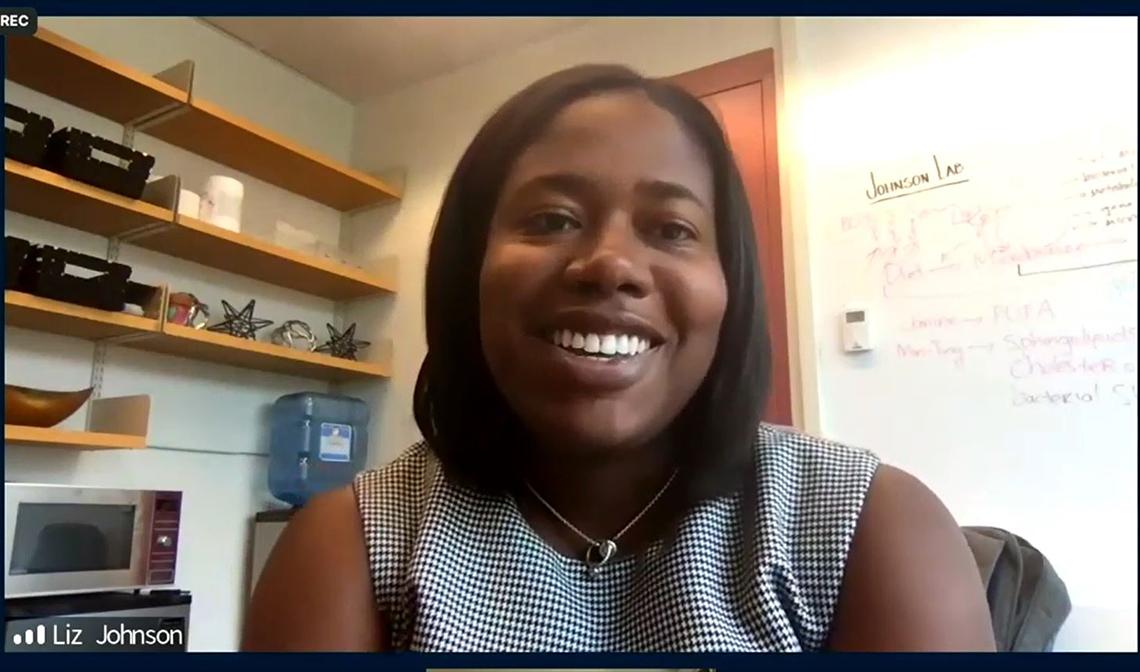‘BOSSS’ in the Gut?
Sphingolipids Play Key Role in Microbiome

A class of lipids named sphingolipids play an important, yet not well understood, role in how microbes interact with tissues in the gut, said Dr. Elizabeth Johnson, during a recent Judith H. Greenberg Early Career Investigator Lecture.
“It’s been really exciting to understand how bacterial sphingolipids work and figure out their exact mechanisms [of action],” said Johnson, assistant professor in Cornell University’s division of nutritional sciences.
Every person is home to trillions of bacteria and other single-celled organisms, collectively known as the microbiome. These microbes colonize different parts of our bodies. In the intestinal tract, for example, microbes derive nutrients and shelter.
“In turn, we get a variety of functions ranging from the extraction of nutrients, protection from pathogens, instructing the development of organs, digestion and uptake of nutrients and immune system regulation,” she said.
Since she started her lab in 2018, Johnson has been trying to “understand host-microbiome interactions and the mechanisms that control or contribute to these interactions.” Specifically, she studies a class of lipids called sphingolipids. They serve as signaling and structural molecules.
Sphingolipids are found in all animals, plants and fungi, as well as some bacteria and viruses. In eukaryotes—organisms whose cells have a nucleus enclosed within a membrane—sphingolipids are involved in processes ranging from cell growth and survival to insulin signaling. Bacteria that produce sphingolipids are successful colonizers of host systems. These particular lipids are very important in helping the cell resist stress.
In microbiome culture models, sphingolipids have been shown to promote the fitness of commensal bacteria (microbes that supply the host with essential nutrients and defend the host against some pathogens) and are toxic to some pathogens. Bacterial sphingolipids have been shown to modulate inflammation in the colon and are crucial for immune system development during early life.
To find out how sphingolipids in the diet interact with microbes, Johnson’s lab developed the Bioorthogonal labeling-Sort-Seq-Spec (BOSSS) method to identify and characterize what happens to sphingolipids once they reach the gut microbiome. The methodology combines gene sequencing, florescence microscopy and comparative metabolomics.

BOSSS methodology revealed that specific sphingolipids from a mouse’s diet do indeed interact with the gut microbiome, including one new lipid that had yet to be discovered.
Sphingolipids might have prominent and supportive roles in understanding diet and microbiome, she said.
After her talk, Johnson participated in a brief question and answer session with NIGMS director Dr. Jon Lorsch. The full presentation can be viewed at https://videocast.nih.gov/watch=43771.
Earlier this year, the NIGMS Director’s Early Career Investigator (ECI) Lecture Series was renamed the Judith H. Greenberg ECI Lecture Series to honor NIGMS’s former deputy director. The series was established in 2016 to encourage undergraduate students to pursue careers in biomedical research. The scope has since broadened to include graduate through postdoctoral students and other early-career scientists.
